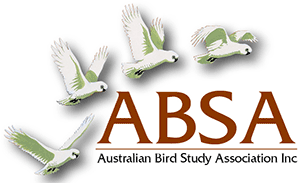Group size and composition in the Grey-crowned Babbler Pomatostomus temporalis in an urban environment
| Posted: |
25/03/2021 |
| Author(s): |
David Geering, Hugh Ford, Kathryn Teare Ada Lambert |
The Grey-crowned Babbler Pomatostomus temporalis, a cooperatively breeding woodland bird, is declining in the
southern parts of its range where its social dynamics and reproduction have been negatively affected by fragmentation
and degradation of suitable habitat. We studied 12 groups of Grey-crowned Babblers in and around Dubbo, New South
Wales, eight in altered habitat and four in the surrounding natural habitat of Ironbark/Cypress woodland. Individuals were
captured and colour-banded and weighed. Feather samples were collected for DNA analysis to determine the sex of
individuals. There were no signifi cant differences between groups in natural and altered habitat in sex ratio, group size,
or mean weight. Mean group size was 6.7 birds, with a mean of 3.3 young birds from the previous two breeding seasons,
fi gures comparable with or better than those in groups from more natural habitats in Queensland and New South Wales.
Mean weights were similar to those of birds in the Pilliga Nature Reserve 230 kilometres north of Dubbo, but heavier than
those in Queensland. Generally, the population of Grey-crowned Babblers inhabiting areas in and around Dubbo seems
to be healthy, although this may change as the city grows.
>> Download Abstract |
File Size: 9KB
>> Download Complete PDF | File Size: 1MB
